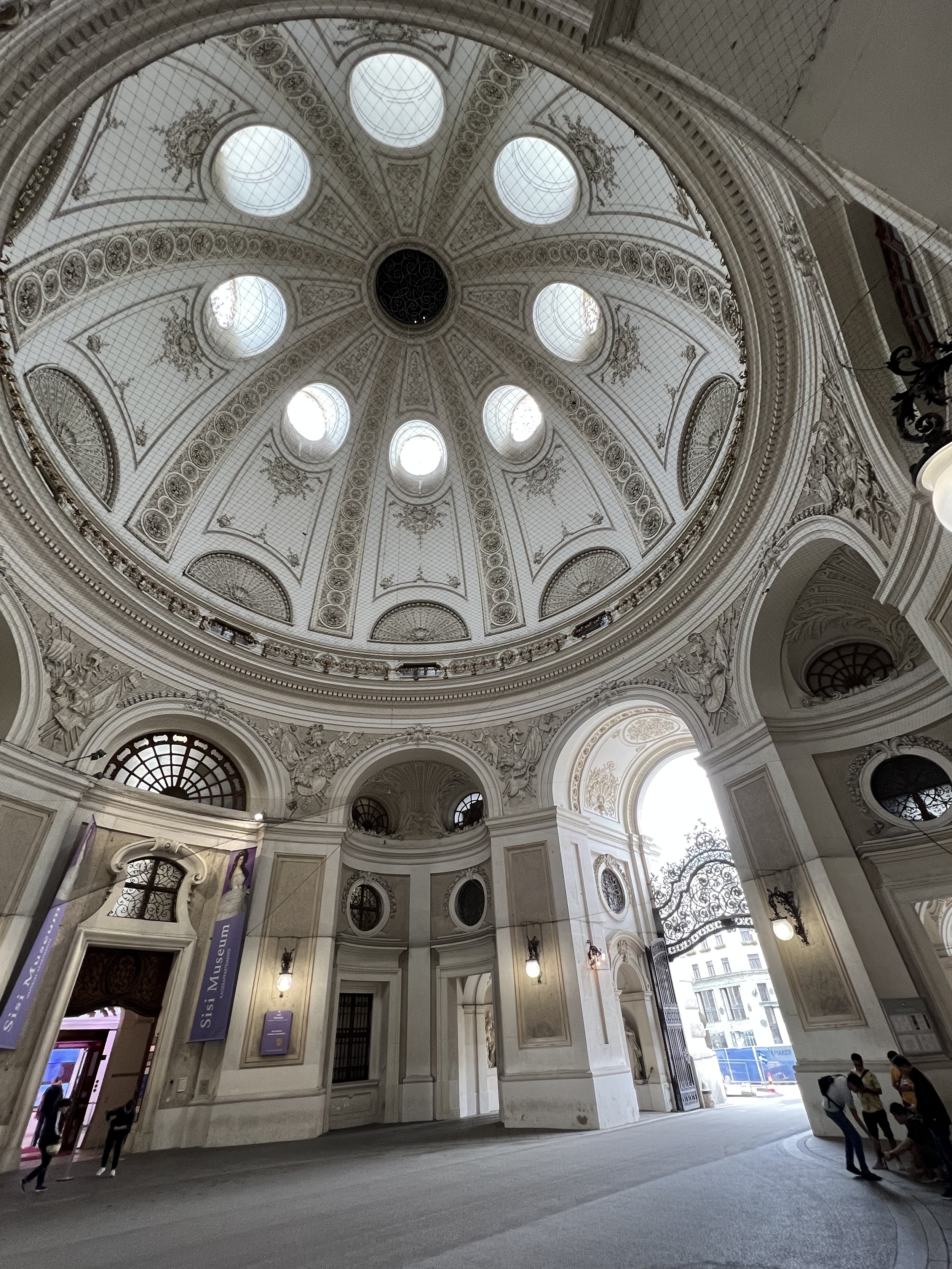The 5 Best Things to do in Vienna as Classical Musicians!
In 2018, my husband won first prize in the Grand Prize Virtuoso Salzburg Competition and was invited to perform at the Mozarteum in Salzburg, Austria. Since we had never taken a honeymoon, this seemed like an IDEAL time to make a vacation out of this opportunity. So, Ross played his concert first thing on our trip and then we spent the rest of our time riding on trains in Central Europe. We spent most of our time in Vienna and absolutely fell in love with the city.
The Hofburg
When the opportunity came to perform on the Classical Music Festival in Eisenstadt, Austria this year, we both leapt at it and decided to revisit Vienna for about 5 days prior to the start of the festival. So for my first blog back from our playcation, I thought I’d offer you a post about the things we loved most about Vienna as classical musicians.
Vienna was the center of the musical world in Europe for many years. Most people think of Classical Music as Haydn, Mozart, and Beethoven and they all lived and worked in and around Vienna for the majority of their careers. (Haydn lived mainly in Eisenstadt, but he did have an apartment in Vienna later in his career and started out as a child singer in St. Stephen’s Church.)
Here are our 5 Best Things to do in Vienna as Classical Musicians.
1. Beethoven Museums
There are two Beethoven museums in Vienna. The first is a small one that is in an apartment in which Beethoven lived in the heart of Vienna. It was fairly empty while we were there so we felt like we got to have the whole museum to ourselves. The other museum is a short train ride north of Vienna in Heiligenstadt. In the 18th/19th centuries, Heiligenstadt was out in the country, and Beethoven’s physician recommended that he go there to take a respite out of concern for his health. In 1802, Beethoven wrote what we now call the Heiligenstadt Testament. Knowing that his hearing loss was permanent, Beethoven penned this note and contemplated ending his own life. He ultimately decided against this because he felt that there was so much left for him to compose. The museum in Heiligenstadt is in the house that Beethoven rented there. Each room contains items that he owned, music in his own writing, and an overwhelming wealth of information. Our favorite exhibit was a small keyboard that played one of Beethoven’s piano sonatas as he would have heard it in 1803, 1806, 1809, etc. The final key on this keyboard played a section of Beethoven’s 9th symphony as we think he would have heard it in 1824 and then switches to a normal recording of that same section. It was so overwhelming that I began crying in the middle of this museum. I highly recommend this museum! 10/10
The most amazing exhibit at the Beethoven Museum in Heligenstadt.
Prepare to weep in public.
2. Sitting at a Café.
Ok, so this might sound weird. Why would I recommend just sitting at a café in Vienna? Well, there is an entire culture built around cafes in Vienna. Every single composer who made their home in Vienna, frequented their favorite cafes. This is where all the artists, intellectuals, and politicians would go to discuss and debate. The Viennese don’t grab their coffee to go while they are on their way to work. They sit down with a delicious cup of coffee, engage in conversation, and then go about their day. Maybe these cafes allowed all of these great composers a chance to be inspired by one another. Either way, slow down. You’re in Vienna. Have your coffee slowly and with intention. Our favorites were Café Sperl, Café Imperial, and Café Museum.
Cappucino at Cafe Imperial
Cafe Imperial hosted famous musicians like Anton Bruckner, Arnold Schönburg, Alban Berg, Anton Webern, Johannes Brahms, and Gustav Mahler!
3. Zentralfreidhof
This is a huge cemetery on the outskirts of Vienna where the Who’s Who among famous Viennese persons have been buried. Though some have not actually been buried there, they are still given ornate gravestones to commemorate their contributions to Vienna and Viennese culture. Here you’ll find the final resting places of Beethoven, Brahms, Schubert, Gluck, the entire Strauss family, Schönburg, and an honorary grave for Mozart. Most of the composers here are buried in Group 32A, which is for those that contributed to Vienna’s great musical culture. However, if you keep walking around the cemetery, you will find the grave of Antonio Salieri far away from Group 32A, on the side near a wall. Even in death poor Salieri cannot compete with the great Mozart…
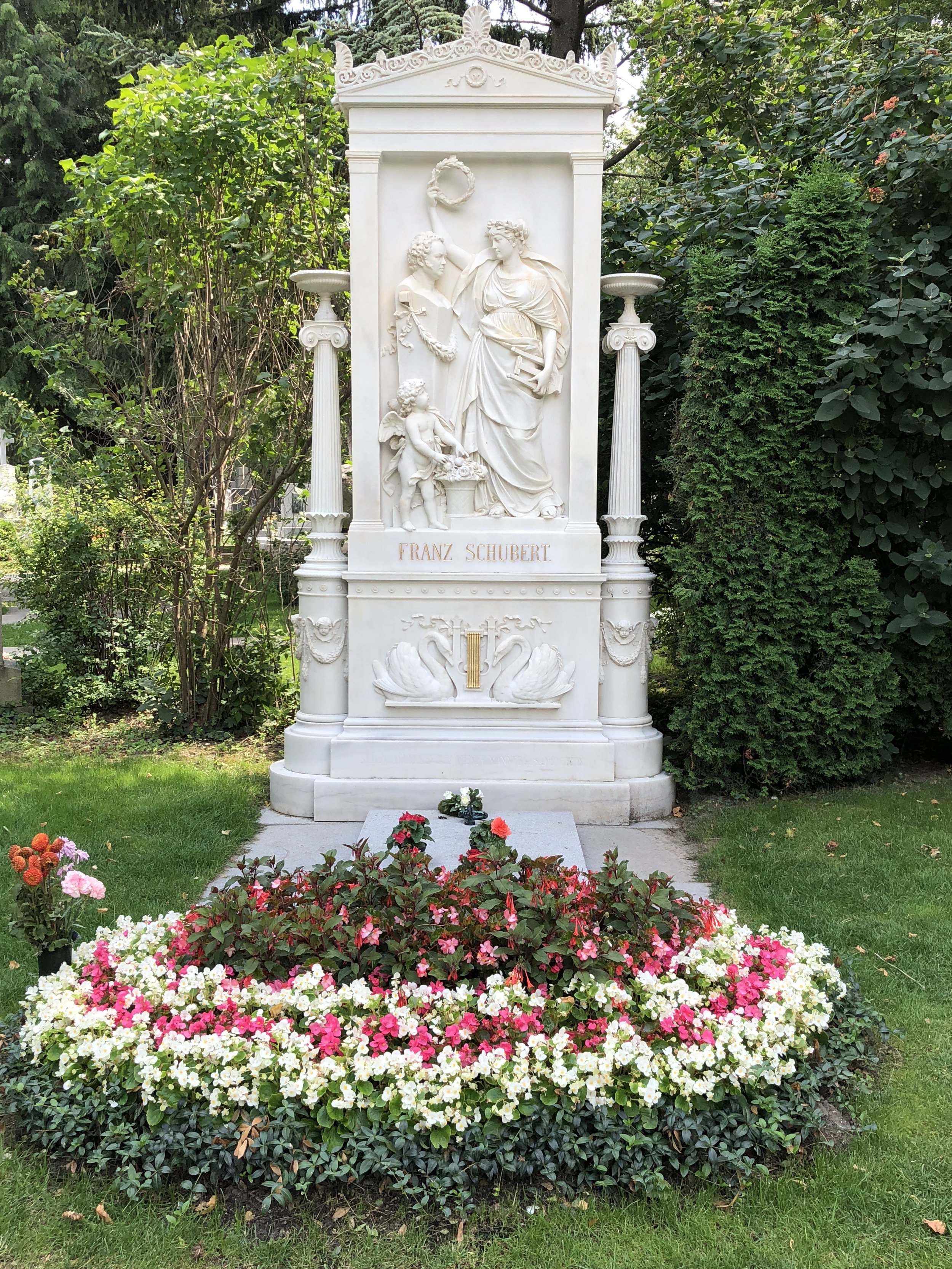
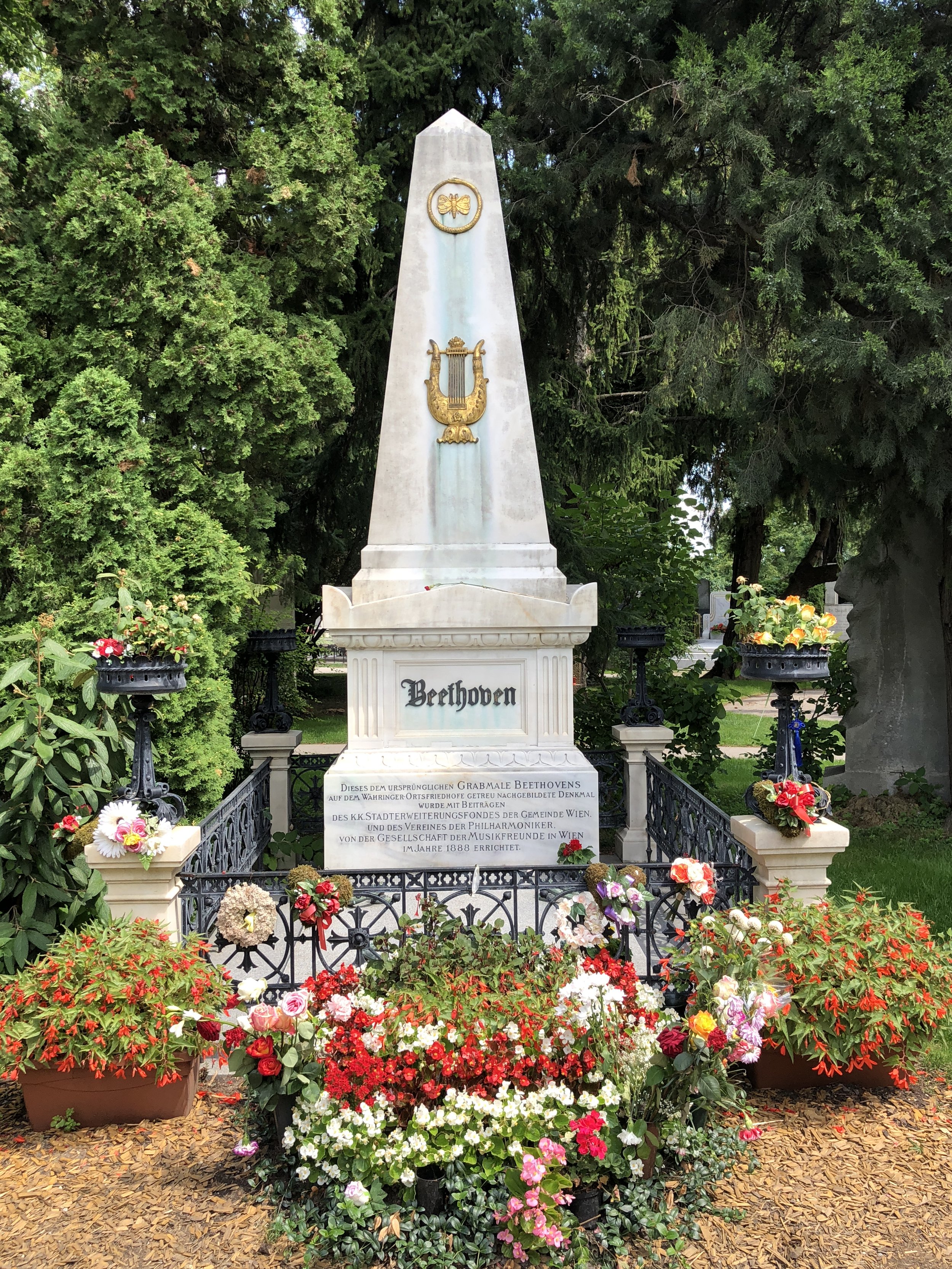
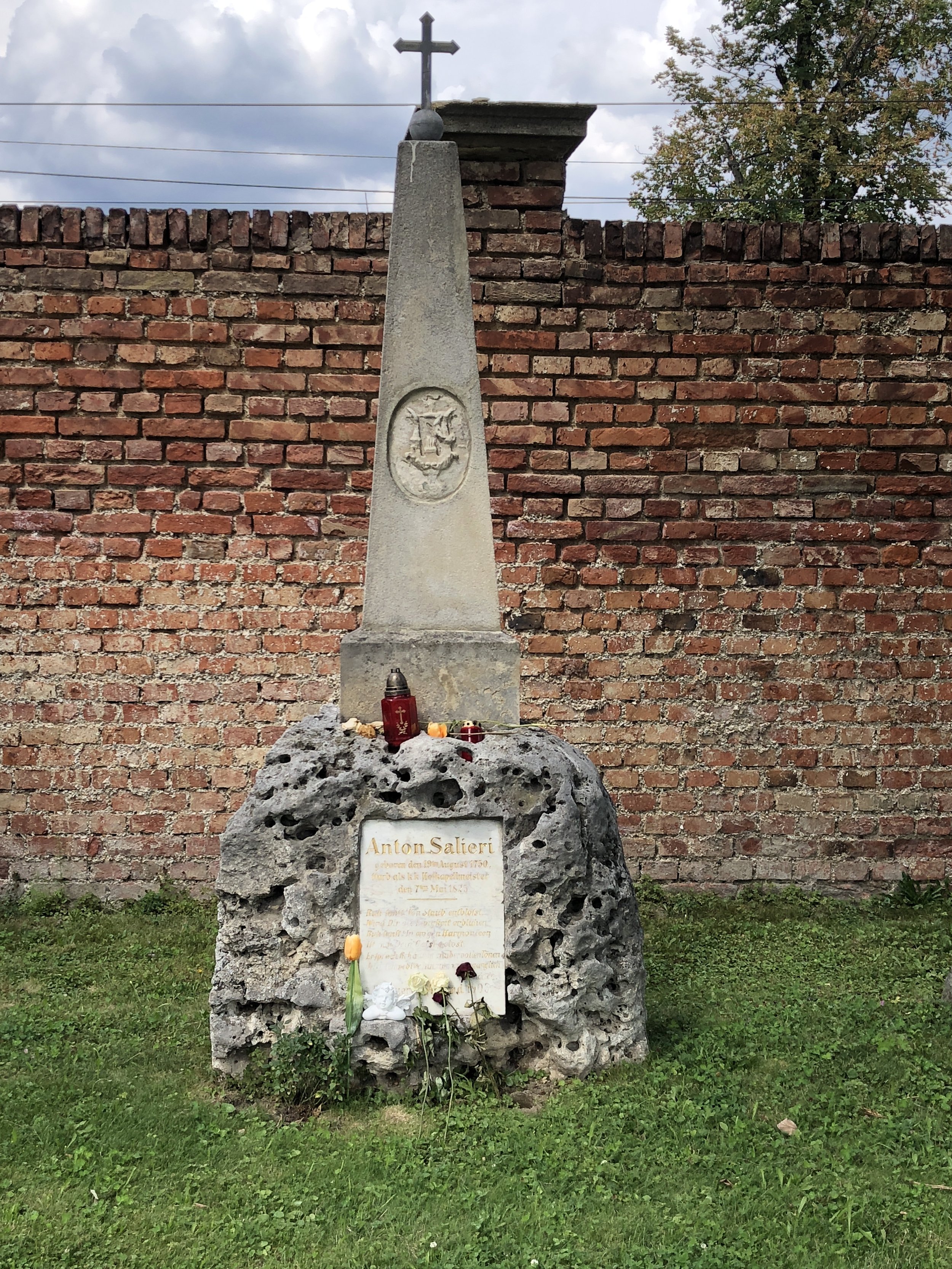
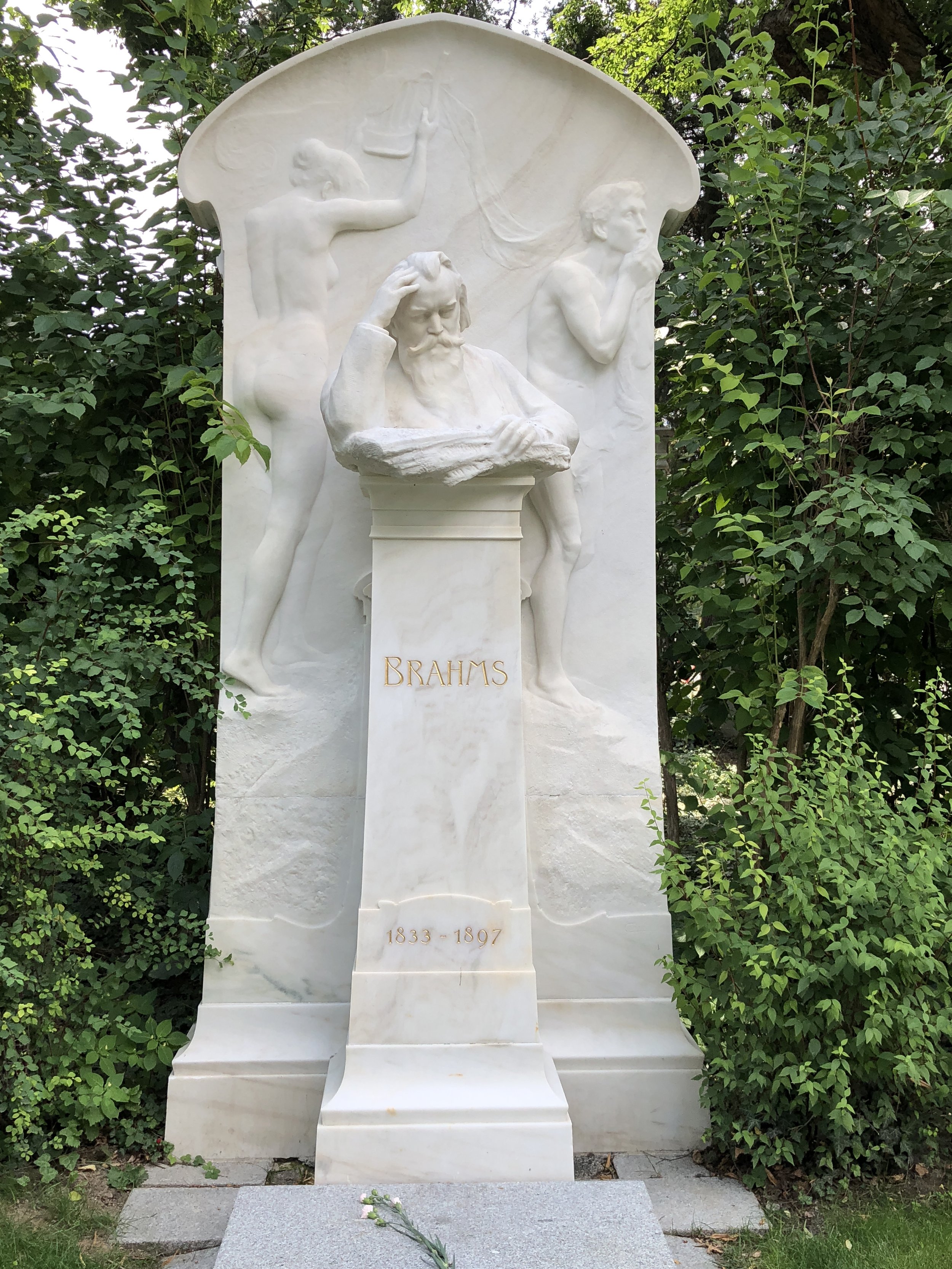
Ross and I visited this cemetary in the early morning and it was practically empty. It is much more park-like than a traditional cemetary. There are areas that memorialize fallen soldiers from both World Wars, there are lengthy, cool grassy areas, and there are family plots that are still in use today as each generation eventually is buried with their ancestors. I recommend trying to visit in the morning when it opens in order to avoid the tourist crowds that arrive on buses later in the afternoon. It is free to wander in the Zentralfreidhof. There is a small museum about the Viennese traditions of funerals and burials that does cost a little money that is quite interesting as well. If you’re looking for Gustav Mahler’s grave, you’ll need to go north of the city to a Jewish cemetary near Heligenstadt.
4. Schonbrunn Palace
Ok, so this isn’t directly music related other than the Vienna Philharmonic plays their beautiful summer concert here every year, but this palace is absolutely gorgeous and you can learn a lot about the upper class society that was supporting musicians throughout much of Vienna’s 17th-19th centuries. The wealth and opulence was astounding and almost disgusting, but these were the people that decided on what music was within good taste. Here you can view the apartments of the Emperor and Empress and stroll through the immense gardens and think about all the music that must have been played here! It is stunning and so different to anything that we can see in the United States. One thing that Vienna has done well, post-Empire, is making sure that former holdings of the Emperor are now either buildings for government business or they have been opened for public viewing. Many gardens are free to wander through and that’s where you’ll see more locals as they go for their daily jogs or dog walks.
Schonnbrun Palace and gardens
5. The House of Music
The last place I will recommend for any musicians visiting Vienna is the House of Music. This interactive music museum is incredibly fun! You get to conduct the Vienna Philharmonic, virtually, of course, and they’ll let you know if you’re not doing too well! You can view amazing musical art installations and see handwritten scores and notes from many of the great composers who made Vienna their home. The exhibitions change periodically so you’ll find something new and different from what Ross and I saw if you go there now!
Mahler’s copy of The Marriage of Figaro with his conducting notes at The House of Music.
Some of the honorable mentions for this list are the Hofburg Museums, the Grand Hall of the Austrian National Library (absolutely stunning!), and the Belevedere Museums where you can see so much work by Gustav Klimt. Also, you can take a train out to Eisenstadt to see the Esterhazy Palace where Haydn worked for most of his life! It was gorgeous! Just be careful on that train! Part of the train splits into the 63which heads towards Hungary! Make sure you stay on the cars that say 64 so you don’t end up on a train platform in the dark, hoping that you have read the time table correctly and a train will indeed be back to pick you up and take you back to the 64! Not that something exactly like that happened to us…*cough*
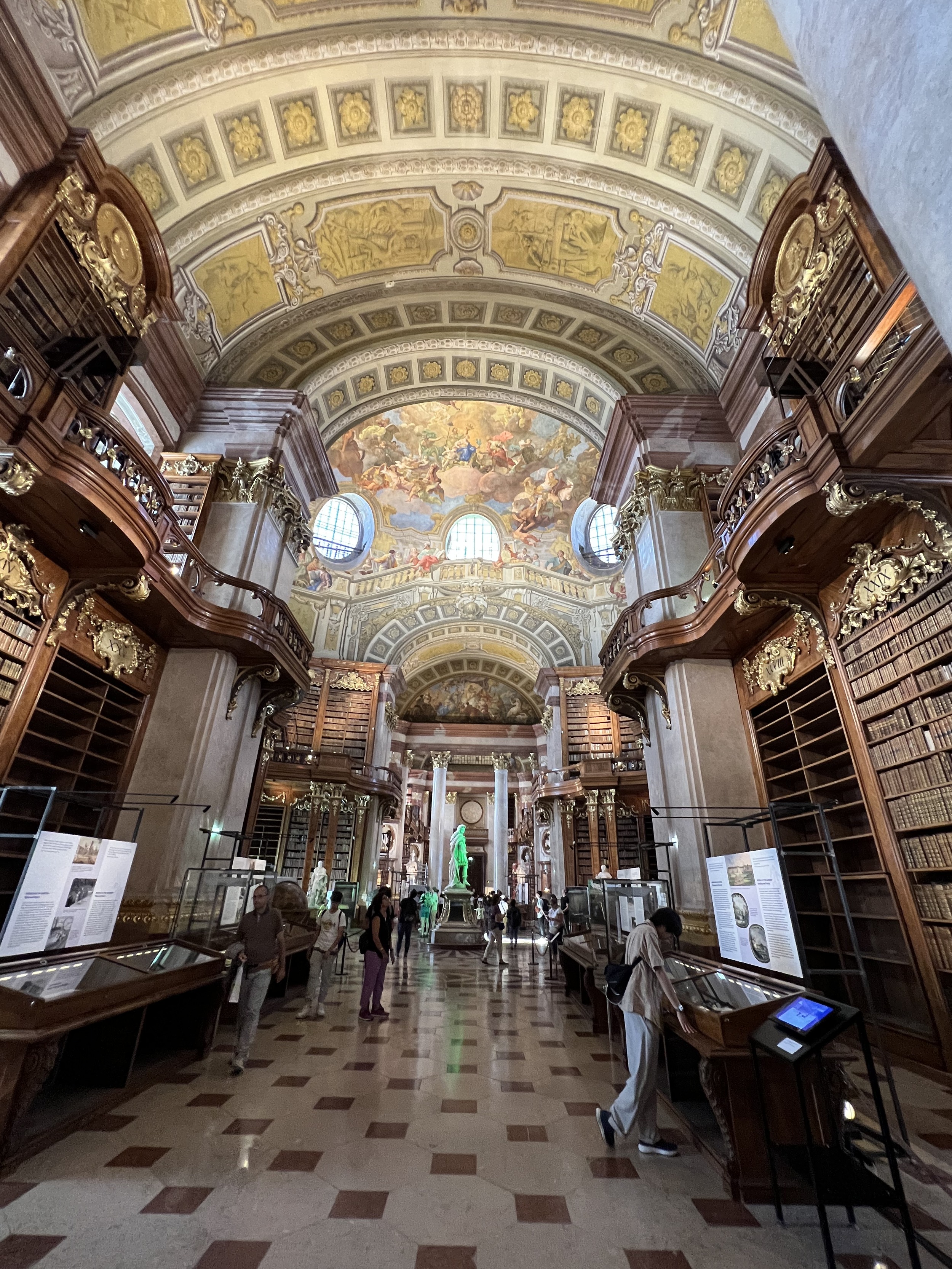
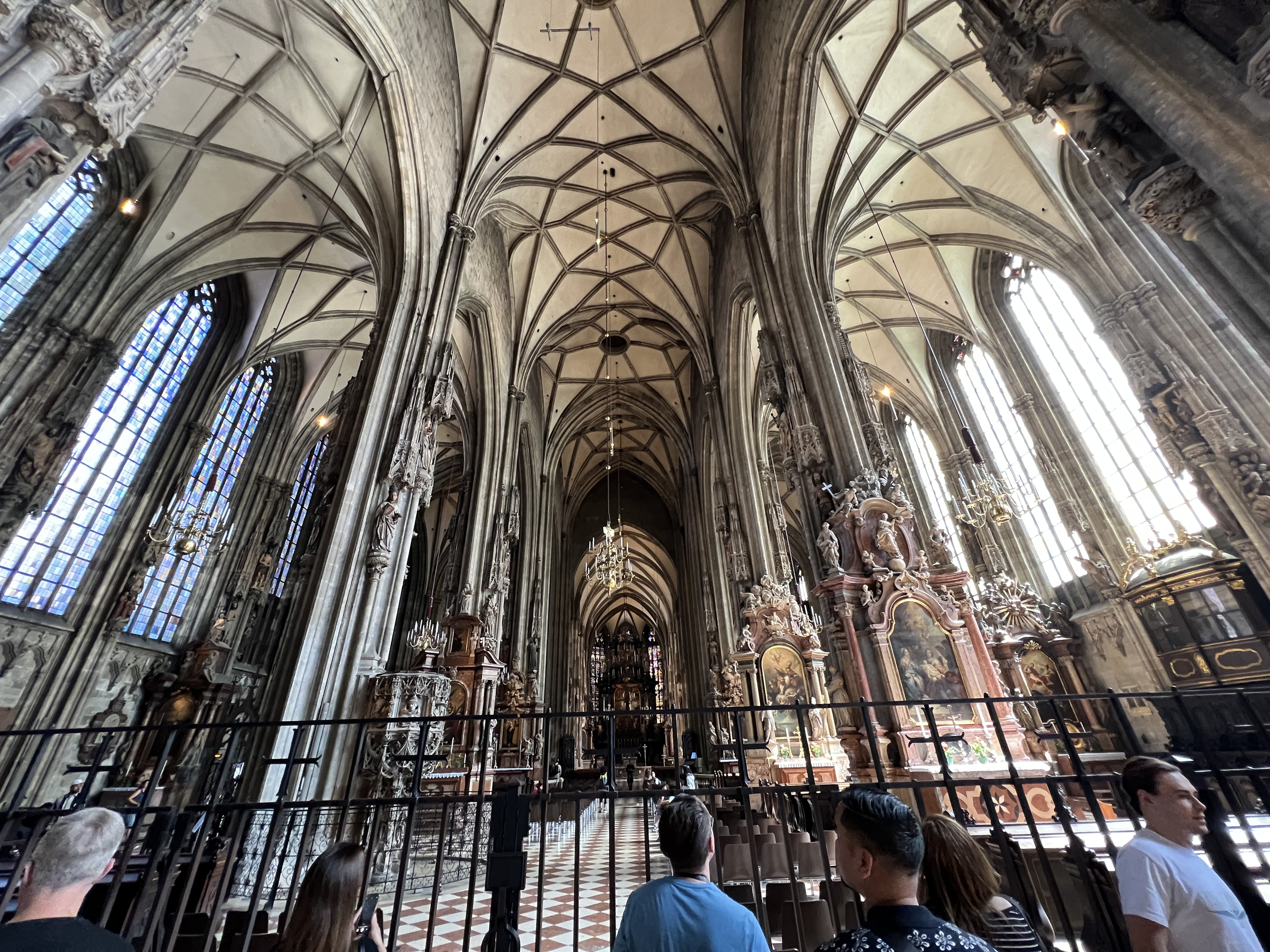
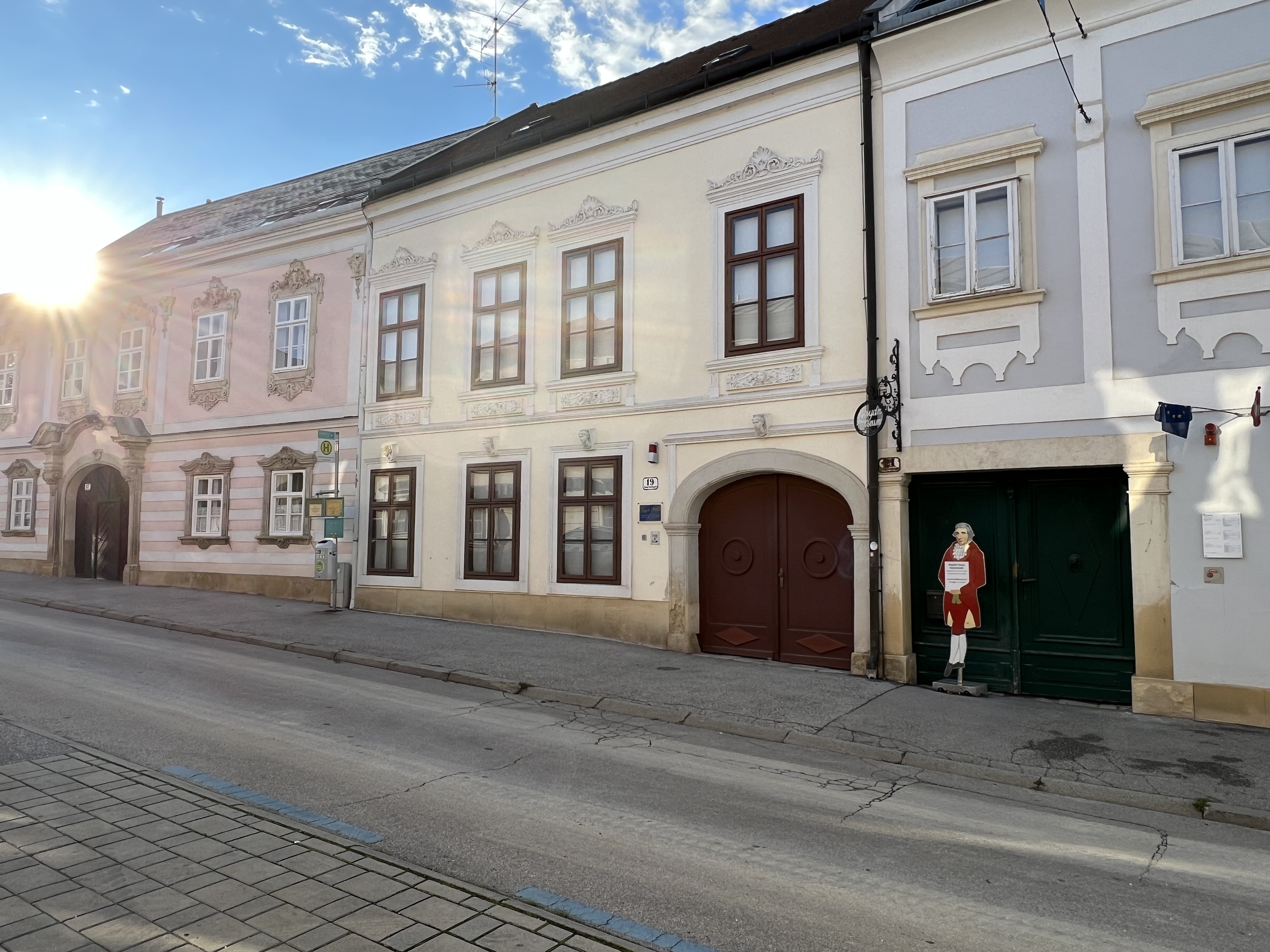
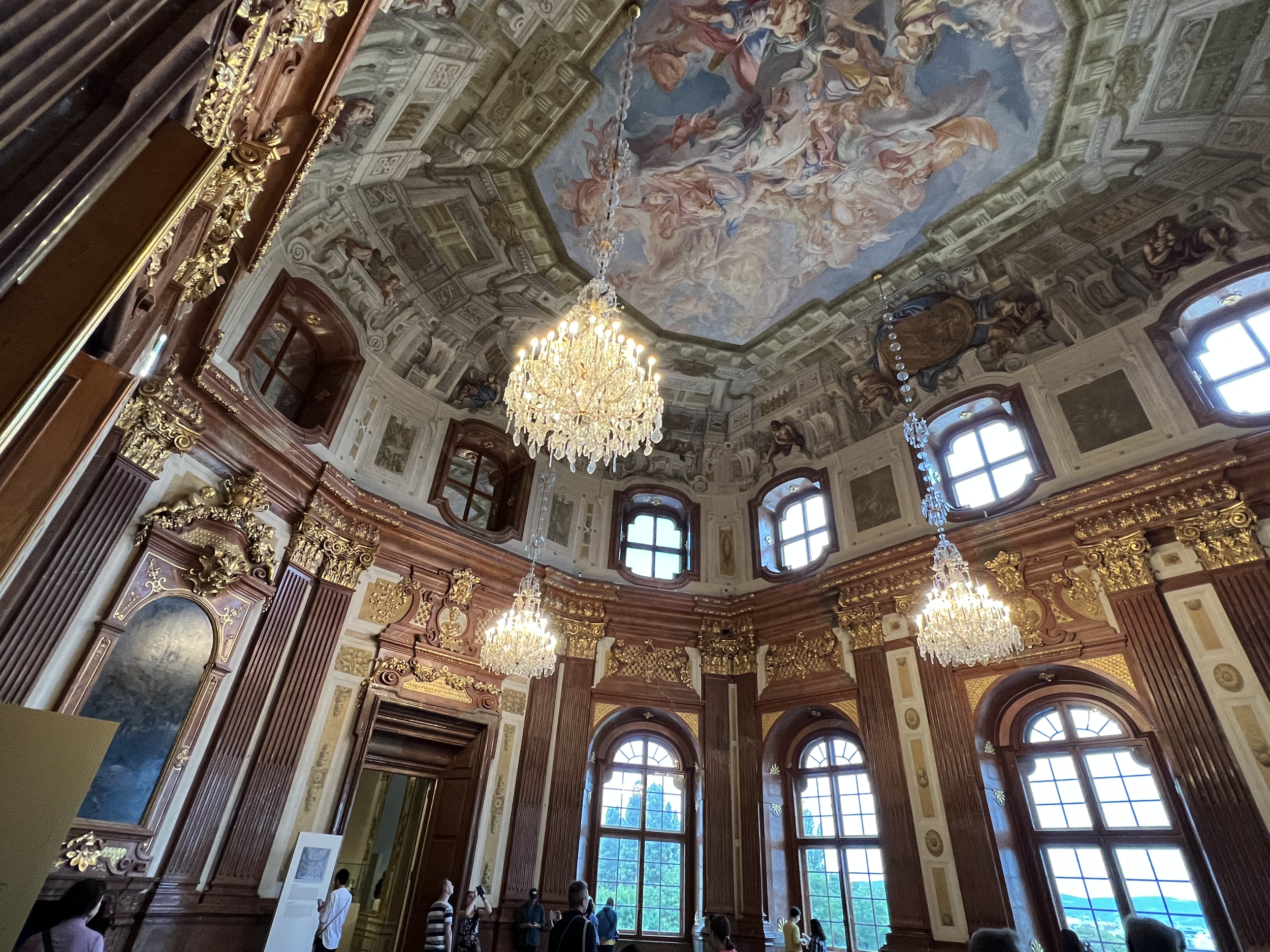
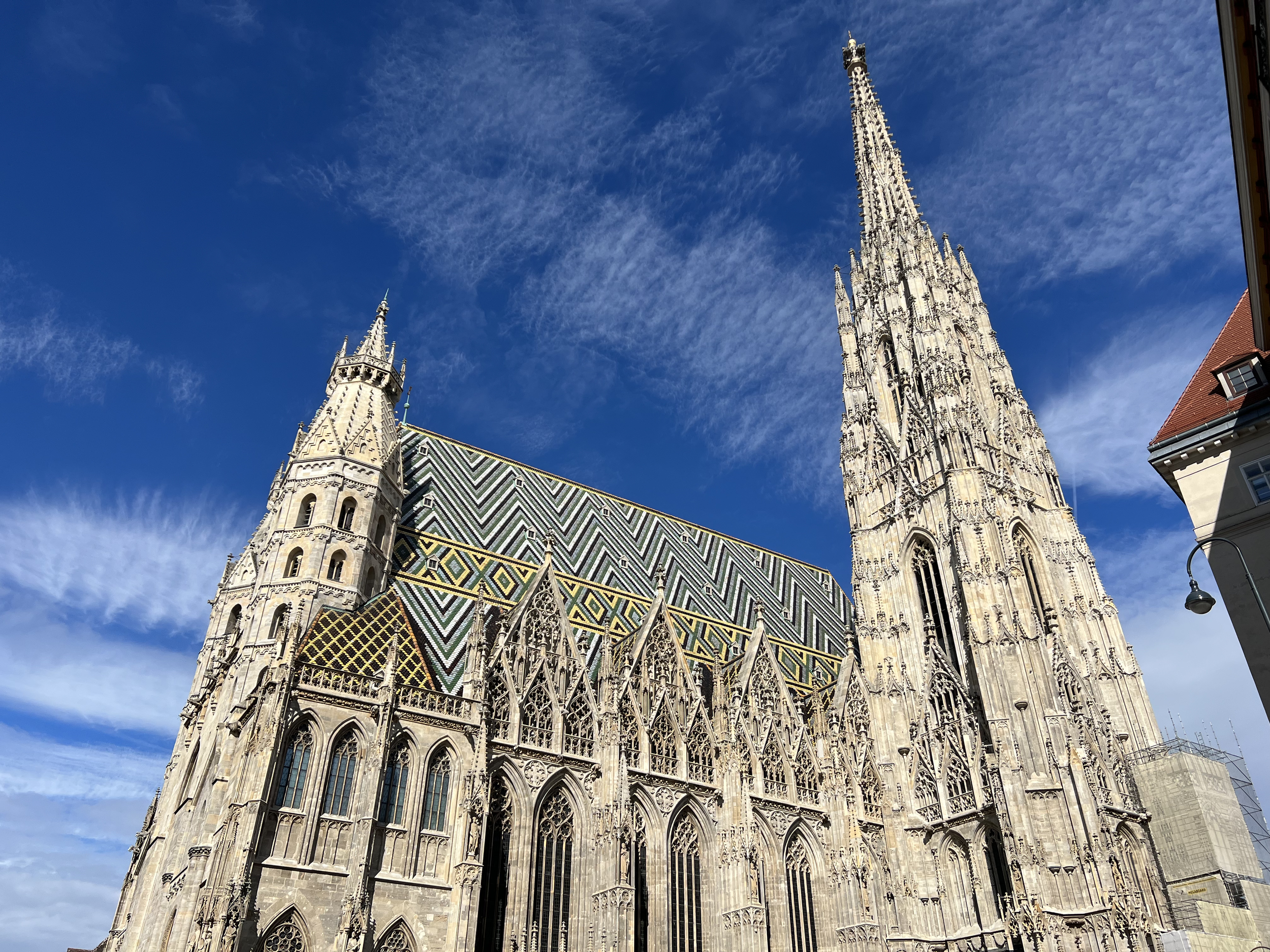
Some places that I do not recommend are the Sisi Museum as its very cramped and dark. So dark that you can’t read any of the informational placards! I also don’t recommend those concerts where the musicians dress up in 18th century garb and play some Mozart and Strauss. Those are definitely for people who don’t really know classical music, and I say get your money from those tourists, musicians! But if you’re really into classical music, visiting Vienna during July and August will not be a great time to hear live music. Most ensembles are on summer hiatus during those months. Though you could investigate going to Salzburg for the Salzburg Festival! Food-wise, I recommend going to Zum Wohl for gluten free schnitzel and In-Dish for Indian Food! They have been our favorite restaurants there on each visit! The Fenster Café also had the best affogato I have ever tasted! We went there at least 4 times!
Next week we’ll be back to more flute specific posts, but I hope you’ve enjoyed my little travel-ish blog about Vienna. If you’re going to Vienna and want some specific recommendations or want to know about eating gluten free there, feel free to contact me! I’m happy to provide you some information about what I found there.
Have a great week everyone!
Dr. L


